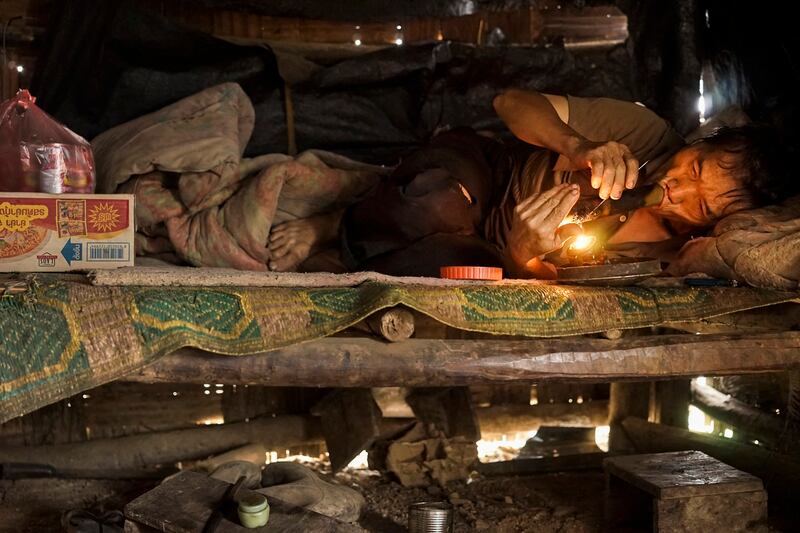Ethnic Hmong villagers in remote areas of northern Laos are continuing to grow opium poppies despite government eradication efforts, due to long-held beliefs about the crop’s medicinal properties, according to officials and residents.
In recent weeks, Lao authorities announced that they had destroyed 2,590 square meters (two-thirds of an acre) of Hmong-grown opium poppy fields in Luang Namtha province, which lies along the border with China and Myanmar, and another 11,000 square meters (2.7 acres) in Xieng Khouang province, on the Vietnamese border.
However, they acknowledged that there are many poppy fields that are too remote to access in other areas of Xieng Khouang, as well as in Phongsaly province, which borders China and Vietnam.
In its World Drug Report 2023, the United Nations Office on Drugs and Crime, or UNODC, said it had documented 5,700 hectares (14,100 acres) of opium poppy cultivation in Laos, mostly in the country’s seven northern provinces of Phongsaly, Hua Phane, Luang Prabang, Oudomsay, Bokeo, Xieng Khouang, and Luang Namtha. Opium can be used to make heroin.
An official from the National Defense Unit in Luang Namtha who, like others interviewed for this report, spoke on condition of anonymity due to security concerns, told RFA Lao that the cultivation and consumption of opium remains common among the Hmong in rural northern Laos, and is “difficult to control.”
“There is a lot growing for local consumption and even though the region has set up rehab centers for people, there aren’t enough,” he said. “There are also still a lot of people who use opium as a medical treatment when they are sick.”
The official said that the Hmong communities that continue to grow opium poppies and smoke opium are extremely remote, preventing authorities from accessing them or regularly patrolling the areas.
“The areas where they live are far from other communities; 30-40 kilometers (19-25 miles) off the main roads, and only motorbikes can navigate the paths, so it’s hard to carry out inspections” he said. “It’s mostly ethnic villagers living there.”
Use in treating sickness
An official from the Natural Resources and Environment Unit in Xieng Khouang said that part of the reason ethnic communities still grow opium poppies and smoke opium in the province is due to their belief that it can help cure them when they are ill.
Opium has a long history of medical use in relieving pain, inducing sleep, and treating bowel conditions.

The official said ethnic communities in Xieng Khouang mostly grow opium for personal consumption, and not in large quantities.
While the overall amount that is grown can vary, he said, “the Hmong grow opium for use, not for sale.”
A villager from Hua Phane told RFA that cultivation of opium poppies had decreased significantly in the province in recent years due to government and NGO campaigns educating residents about the dangers of opium.
But he said that while the use of opium is down in Hua Phane, “that doesn’t mean it has ended.”
“Some [ethnic] groups … grow it in remote areas, far away from the cities,” he said. “They grow it to use as medicine for their families.”
Laos was the third-largest illicit opium poppy producing country in the world until 1998, but the UNODC says eradication efforts by the government and international partners “have reduced cultivation to marginal levels.”
Nonetheless, the agency said, the northern part of Laos remains known as one of two opium producing countries in Southeast Asia, with the main driver of cultivation in the region being “primarily related to poverty.”
Translated by Sidney Khotpanya. Edited by Joshua Lipes and Matt Reed.
